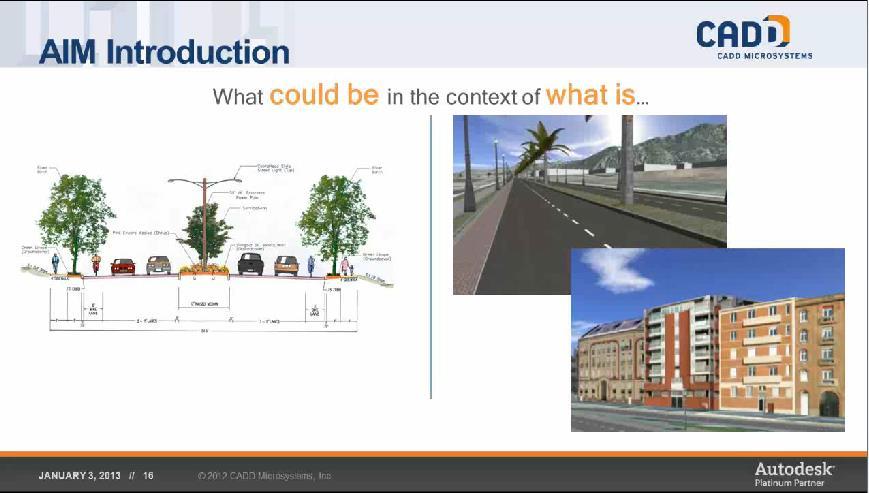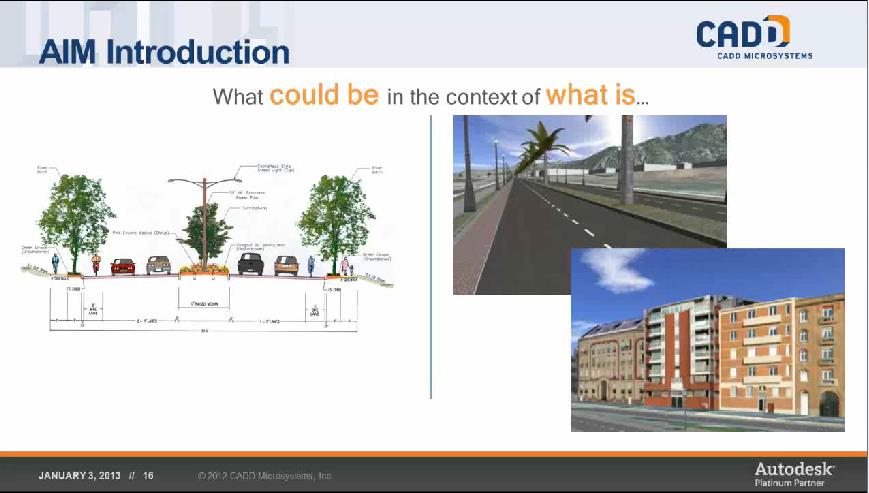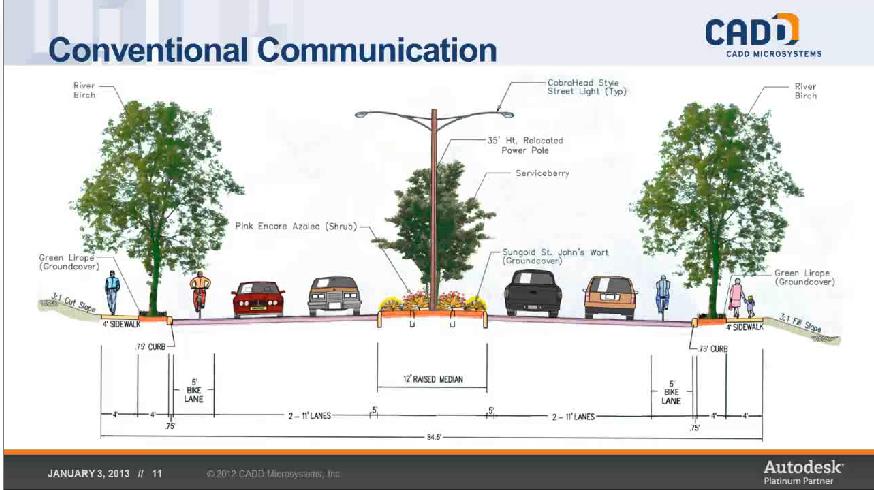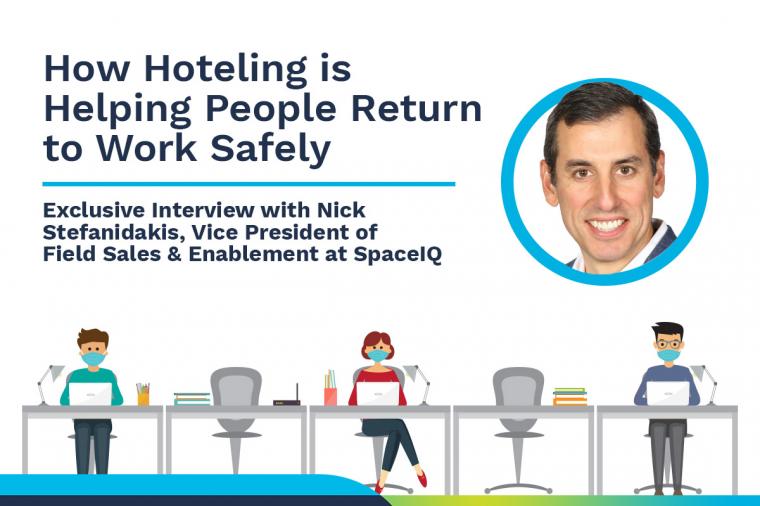“Not in My Backyard!” – How to Better Communicate the Impact of Infrastructure Projects to Citizens

The public is more involved than ever in influencing whether proposed infrastructure projects in their neighborhood get the green light. They want to know how the project will affect them? Will it increase traffic in their back yard? Is it the best use of tax payer dollars? And so on. The problem is, under our conventional workflows, projects are typically communicated through 2D exhibits – plan views, aerial imagery, charts, etc. And while this is a language that design professionals speak very fluently, it isn’t a language that most people in the public speak! If citizens don’t perceive that a project will benefit them then it can be extremely unlikely that the project will come to fruition.
This is a challenge that renowned CAD expert, trainer and author, Donnie Gladfelter (aka The CAD Geek) helped many of us get answers to in his captivating online educational session – Explore New Infrastructure and Planning Solutions for Government – at last month’s Acronym Public Sector CAD Awards (register to view it on-demand here)
Communicating Projects with the Public – Making the Move from 2D to 3D
So how do busy designers and engineers answer any concerns that the public might have, such as a concern that a road rehabilitation project will only bring more traffic nearer their homes.
Designers and engineers speak in charts, figures and design documents. But what the people you are trying to communicate with speak in 3D not 2D. They understand driving down a road, not looking at a 2D exhibit of it. So there’s a disconnect here.
As Donnie explained, a sure fire way to ensure the story you intend to communicate to the public is to move from 2D to 3D. A new solution from Autodesk – Autodesk Infrastructure Modeler (AIM) – does just that. It communicates what could be in the context of what is by enabling designers to create new roads, evaluate surroundings and communicate with feature-rich 3D exhibits using the native language that the public speaks. The good news is it can help designers do this, using the same data that is being gathered to create traditional 2D exhibits. By taking that existing 2D data, AIM lets you build very compelling 3D models that are easily communicable to folks via the Internet.

Want to know more? Donnie’s session – Explore New Infrastructure and Planning Solutions for Government – is now available to view on-demand. Just register here then log-in using your user name and password, then proceed to the “Sessions” area in the virtual theater.
About Donnie Gladfelter
 Donnie Gladfelter (aka The CAD Geek) is a Business Development Manager with CADD Microsystems, a platinum Autodesk reseller. Donnie is also a highly visible and respected thought leader in the CAD community. He is well-known for his CAD Geek blog (www.thecadgeek.com), as author of the book AutoCAD 2011 and AutoCAD LT 2011: No Experience Required, and is a popular speaker at Autodesk University and other industry events. He has worked with the development team at Autodesk to help shape future versions of AutoCAD, and the company has featured him in numerous video interviews, including their popular “Ask the Expert” series. Donnie also helps empower CAD professionals by providing training and services to companies around the world, and is a member of the Autodesk User Group International (AUGI) Board of Directors.
Donnie Gladfelter (aka The CAD Geek) is a Business Development Manager with CADD Microsystems, a platinum Autodesk reseller. Donnie is also a highly visible and respected thought leader in the CAD community. He is well-known for his CAD Geek blog (www.thecadgeek.com), as author of the book AutoCAD 2011 and AutoCAD LT 2011: No Experience Required, and is a popular speaker at Autodesk University and other industry events. He has worked with the development team at Autodesk to help shape future versions of AutoCAD, and the company has featured him in numerous video interviews, including their popular “Ask the Expert” series. Donnie also helps empower CAD professionals by providing training and services to companies around the world, and is a member of the Autodesk User Group International (AUGI) Board of Directors.


















































